I want to talk to you about how to generate more demand for your services – demand from the right people.
In our last video, we spoke about the importance of building a deep understanding of your ideal client and using these insights to guide effective lead generation efforts. Once you have that in place, you need to have an answer for the question; why you?
You've decided that you want to work with them, but why should they choose you out of all the companies in the world?
It's a good question, and by the end of this article, you'll know how to develop a great answer.
The Impact of Poor Demand
If you don’t create demand for your services, then you may find that you've been able to generate leads, but they never translate into a sales opportunity. Or maybe you’ve been able to generate traffic to your website, but the traffic doesn’t translate into enough leads. Either way, low demand means more outbound sales to luke-warm prospects at best, and we all know how that turns out.
Pretty simply, you’re just spinning your wheels not really getting anywhere.
However, it is often the case that relatively simple tweaks in how you frame your value make a ton of difference. That’s what we’re going to talk about today, and I have a model I’m going to give you that will show you what you need in place – it’s my favourite model too!
Defining & Living Your Value Proposition
So, let's start by talking about the real goal here. When you get these tweaks right, when you effectively capture your buyers' attention and interest and your messaging resonates with them, they engage with your content, their ears prick up.
It’s like you’ve gone from speaking Medieval Latin to actually speaking English.
It’s as if they've been treading water in the middle of the ocean, losing hope, and you turn up in a rescue helicopter. They reach out to you.
So, how do we do that?
We make sure our clients set the right foundations before they start content marketing and before they start running ads. In our last article, we spoke about one of these foundations, which is mapping your target client's buying process. Another important foundation is defining and living your value proposition. That's what we're going to focus on in this article.
A value proposition is an academic term, which means people either gloss over its importance or misinterpret what it actually is, which is a huge failure.
I’m not talking about creating a slogan or corporate jargon. Your value proposition is your promise to your current and prospective clients about the problem solving and goal attaining benefits you provide to them. It’s more than a sentence of text. It’s an attitude shift.
It’s about demonstrating that you hold a distinct and superior place in the market for your area of expertise. Not superior in some vague “we’re the best” type of messaging; but instead, specifically illustrating that you know what their problems and goals are, AND you have a system, products and services to get them where they want to go.
But, how do you solve their problems “better”? How do you get them to achieve their goals “better”? And what does “better” even mean? Is this faster, cheaper, for longer, forever?
Developing a great value proposition is a challenge, but the real art lies in how you actually live the value proposition. I have a model I’ll share in a minute that will help you build this out, but first, let me show you an early first step.
What Do You Sell?
What does your business sell?…..Write it down on a sheet of paper or get your answer ready in your head.
I’ll ask it again. What do you really sell?
Give yourself 30 seconds to list your answer before reading on. Seriously, do it, it will be helpful.
Harvard Professor, Theodore Levitt has the most succinct way of framing this…. “People don’t want a quarter-inch drill bit; they want a quarter-inch hole.”
People don’t buy your 'how'. Even though it’s really important to you, you're proud of it, and the processes, steps and systems are fantastic, I'm sure. The reality is; most people don’t care.
They want the problem-solving benefit.
Apple didn’t have the world’s first mp3 player, but their value proposition for the iPad took an mp3 player and set it on course to be the company you know of today. They didn’t get bogged down talking about all the engineering brilliance. They focussed on the benefits; 1,000 songs in your pocket.
Your marketing messaging should be about the benefits. Let me give you a couple of examples. Personal trainers are really selling self-confidence, lawn mowing companies are selling family-time and insurance companies are selling peace-of-mind.
So, before I take you through the model I promised we'd cover, look at your answer. Is this the best description of what you really sell?
With that in mind, earlier I said we help our clients to define and live their value proposition. Living it is a crucial part. Let me explain what I mean.
The Extended Marketing Mix Compass
I’ve used the academic concept of the extended marketing mix (7 P's) and developed a model, or perhaps more appropriately, a metaphor which I believe should guide a services business approach to marketing. For want of a better term, I have called it the Extended Marketing Mix Compass™.
Let’s build it out….

At the very heart of the diagram is your buyer persona. I'm sure you've heard of the concept of customer-centricity; having the customer at the centre of your focus. This is crucial. Often I see businesses creating products and services and marketing campaigns and then thinking who this could be useful for. That’s backwards. You must design around your target customer's needs and wants, so all remaining elements in the 7 P's (which I'll get to later) are adapted to suit the core of this model, and one another.
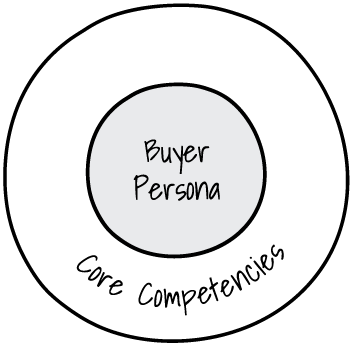
This brings me to the next layer; your core competencies. These are the things that give you a unique position in the marketplace, which is hard to copy. They are your superpowers.
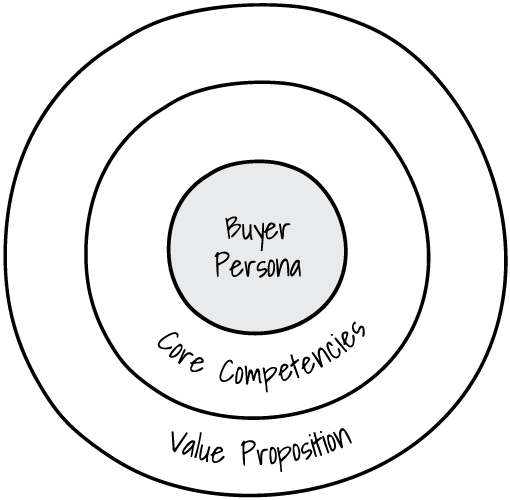
This is where your value proposition comes into play. It's how you deploy those core competencies in a way that is valuable to your buyer persona. Your value proposition can change over time, to use your superpowers in a way that matches the evolving nature of your buyer personas. That's not to say it has to change every few months. But it should become out of date, or your business will be....well, out of date.
This completes the core of our model. Now, we have the extended marketing mix elements, which is how you live your value proposition.
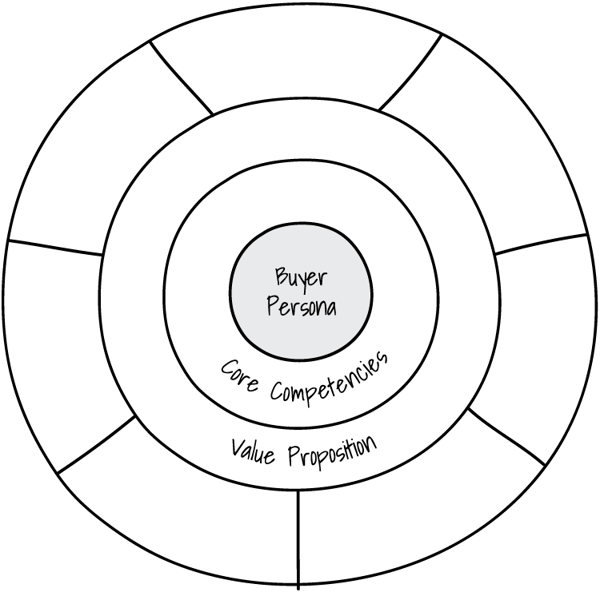
There are 7 elements here which all need to work in harmony. Otherwise, you won't be operating to your potential.
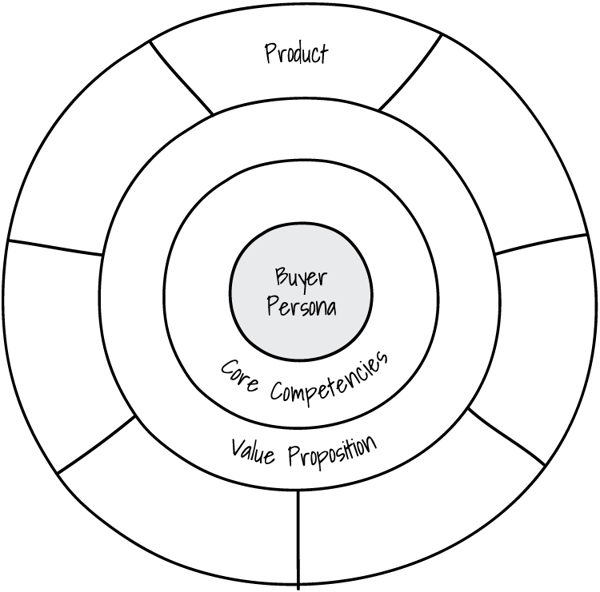
The product relates to the goods and services that you provide. It needs to deliver problem-solving, and goal attaining benefits consistently with your value proposition, core competencies, and needs and wants of the buyer persona.
This is why we look outside-in.
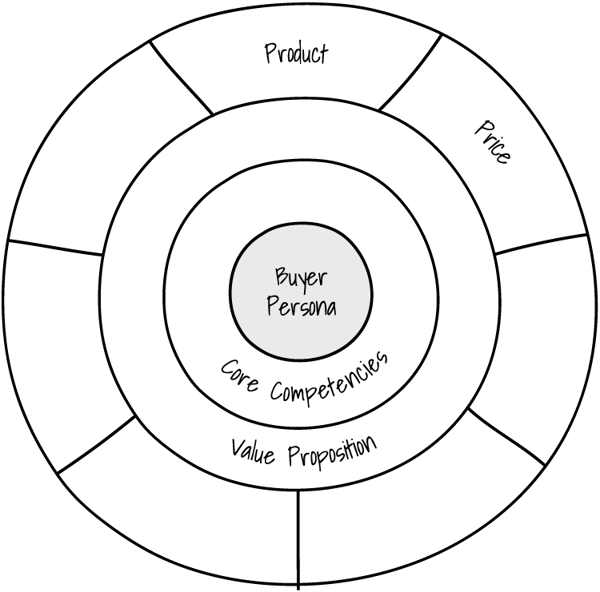
Price is next and follows the same outward-in approach. The key here is to think of all the costs associated with your goods and services, which includes non-monetary costs. 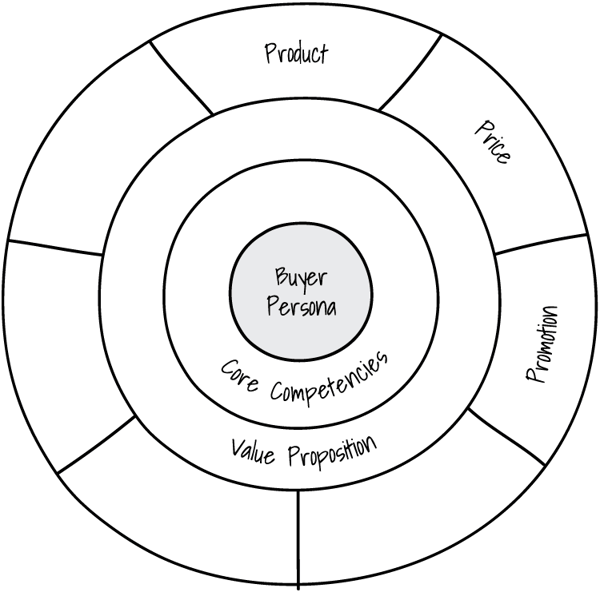
Promotion is better classified as communication. It is about how you communicate value, in all mediums. 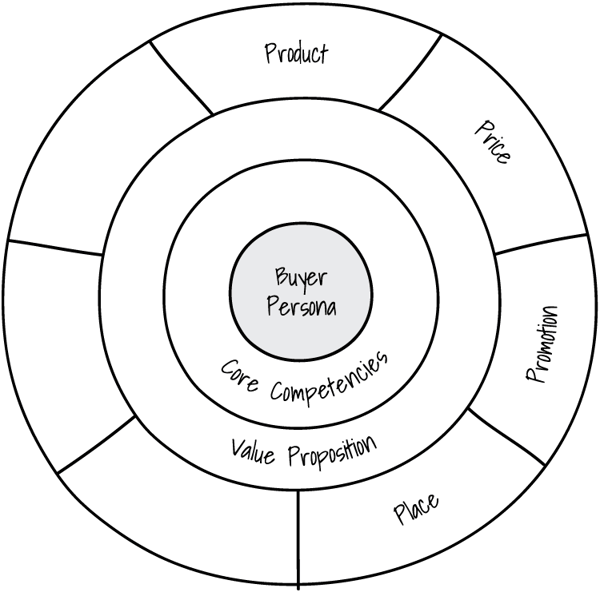
Place refers to how the buyer persona gets the problem solving benefits. Where do they have to go (physically or virtually), what are the distribution channels? These are the important elements you need to design for.
I'm operating at a high-level here, so we can keep moving.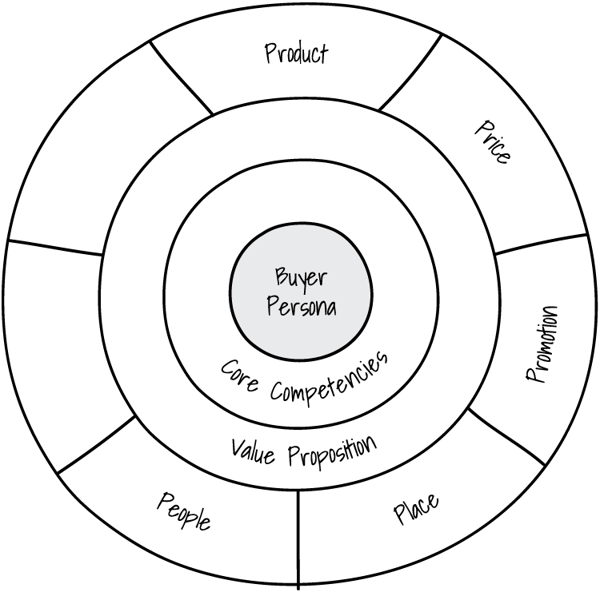
People refers to your team. Have you got the right team, with the appropriate skills and experiences to deliver value?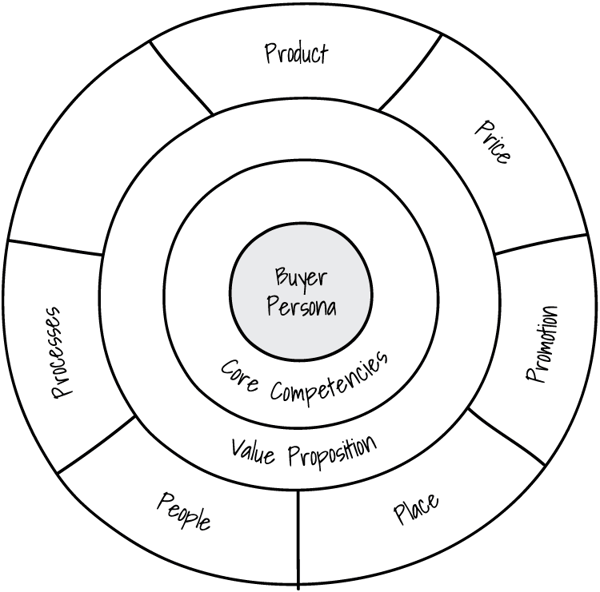
Processes relates to how you do what you do. I said before it should not be the focus of your marketing. The better and more accurate definition, is that it should not be the focus of your 'Promotion'; it is what you do behind the scenes to deliver value, and like all 7 elements, plays a vital role in living your value proposition.
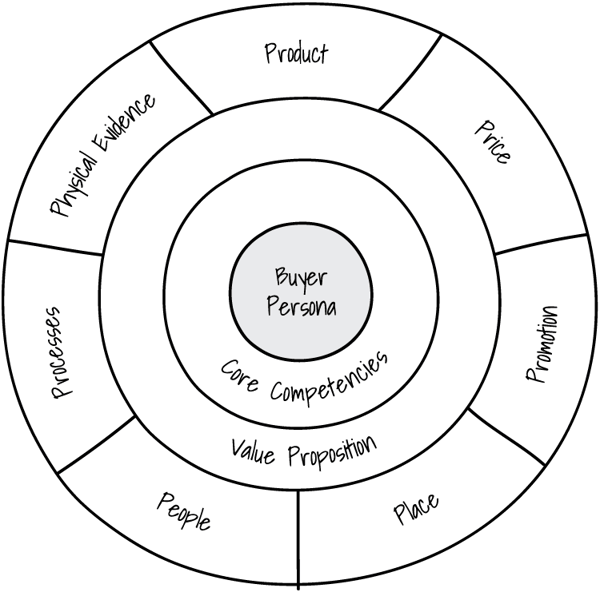
Physical Evidence is our final component, and helps us answer the question; why you?
You need to provide cues and social proof that give the buyer persona confidence in you.
As I said, this is a very quick overview as we could spend hours on this, and in fact I do, we have an entire module of the Marketing Compass Accelerator program which breaks down what to do and how to do it because so many businesses get it wrong.
You Already Have One
The key takeaway for you is this: you already have an Extended Marketing Mix Compass™ in place, even if you didn’t know about this model. So, you’re not creating one, instead, you are refining what you already have.
In keeping with the compass analogy, let me ask you another question....
Is your Extended Marketing Mix Compass calibrated?
Is it going to take you where you want to go?
If the answer is no, I suggest you see the full Marketing Compass™ Strategy in action and use the models and workbooks we provide to audit your current marketing performance.
Follow the link below to get started.



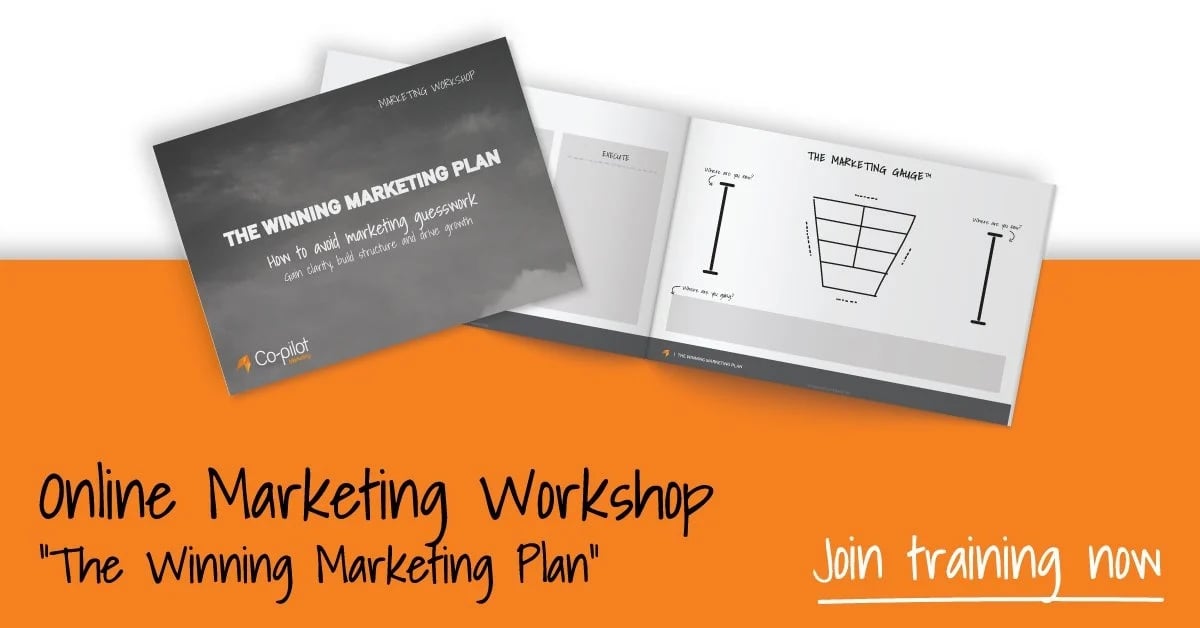

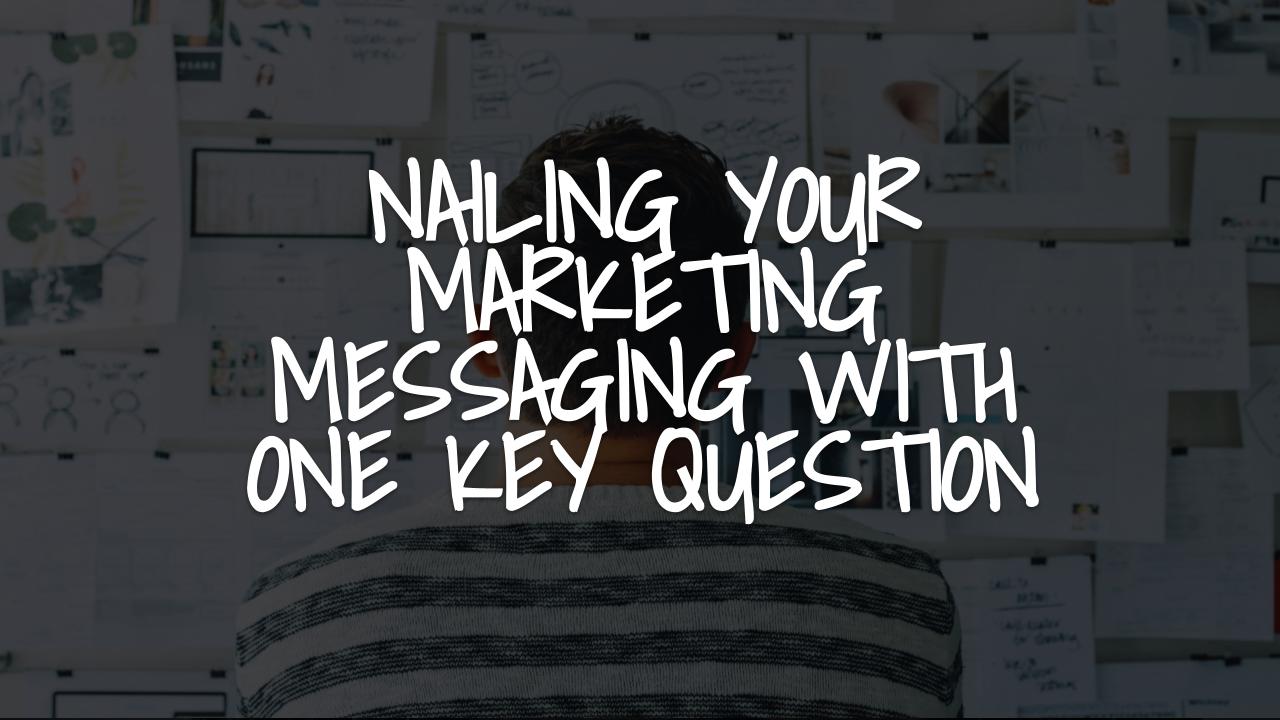
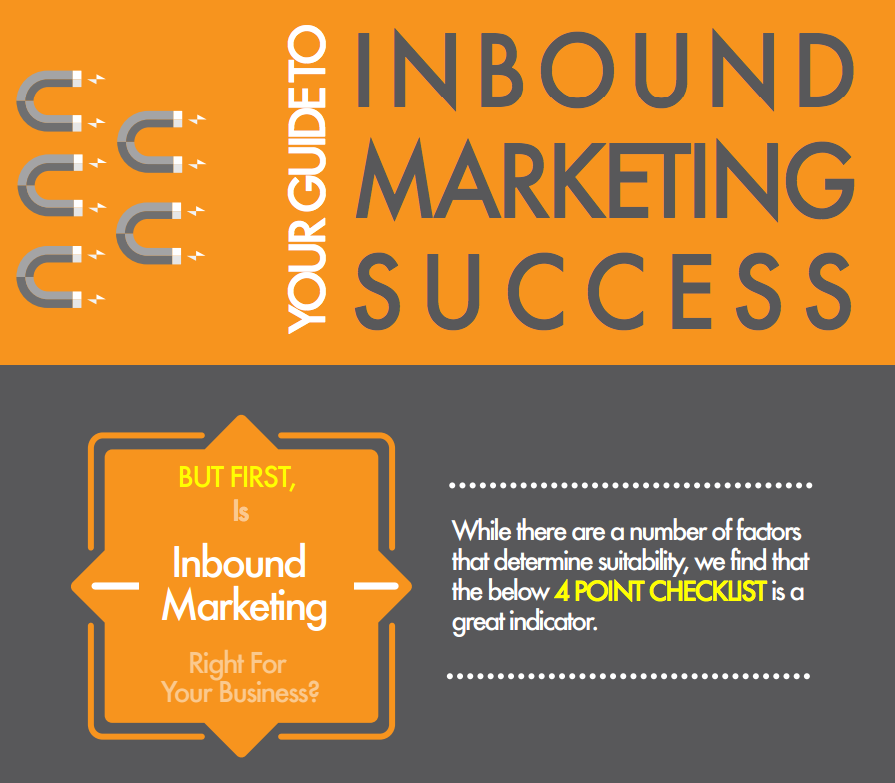
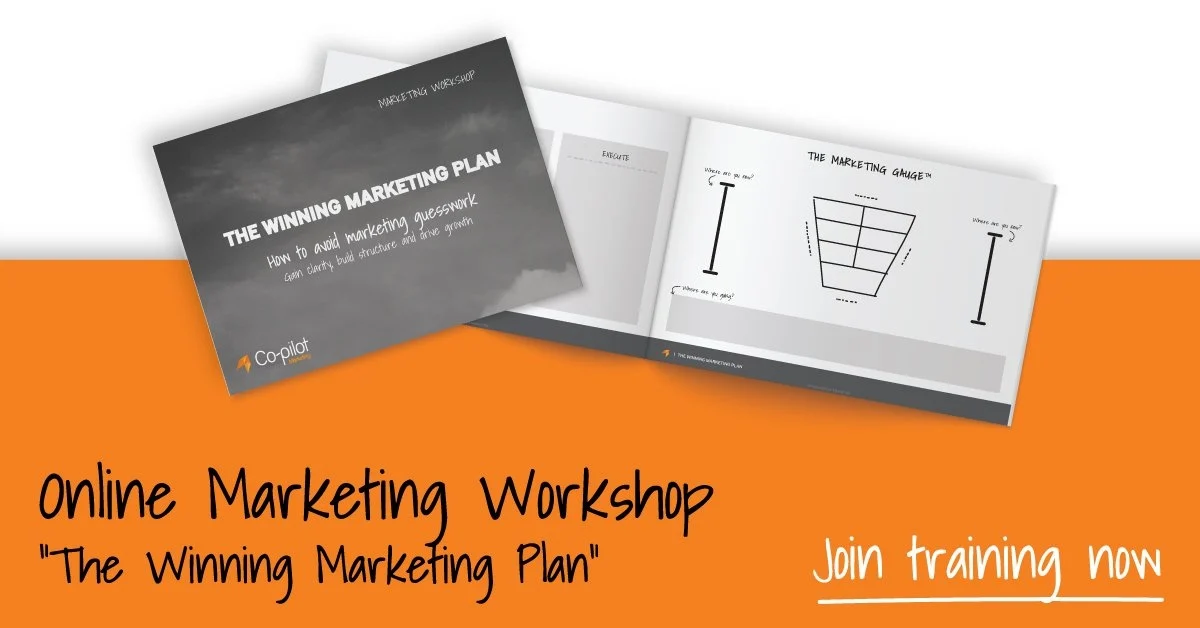
Speak Your Mind